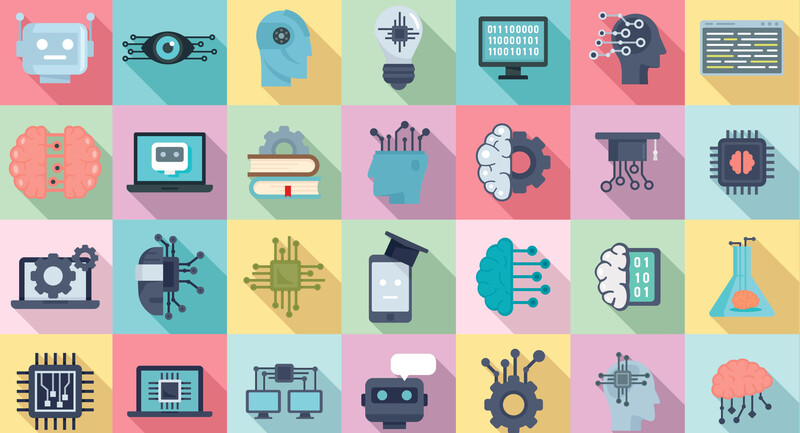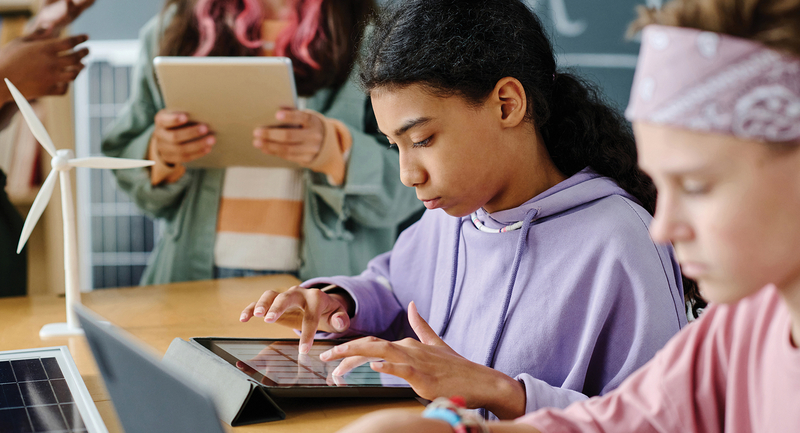In December 2022, I facilitated an informal workshop on the implications of artificial intelligence (AI) for what and how we teach. After showing a demo of ChatGPT, a social studies teacher, clearly frustrated by the potential for students to misuse the technology by plagiarizing, commented, “Why would they create this? It’s like they loaded a gun and just left it there for any student to use.” After showing the same demo a few weeks later, a special education teacher remarked, “This is a game changer! It’s really going to help my struggling readers."
AI is creating unique challenges for schools and PD providers. From outrage to excitement, the release of ChatGPT—an AI chatbot with advanced language processing capabilities—is eliciting a range of powerful emotions from educators. Furthermore, AI is advancing at a breakneck speed, outpacing traditional forms of PD in which an expert offers advice during a beginning-of-the-year presentation.
Based on my experience as an instructional coach and workshop facilitator on student-centered technology, in order to address these challenges, we must update our model of PD to ensure educators 1) gain enduring insights on how to craft curriculum that is meaningful in the AI era, and 2) build the reflective capacity necessary to update their practices long after they attend a ChatGPT-inspired workshop.
We must update our model of PD to ensure educators gain enduring insights on how to craft curriculum that is meaningful in the AI era.
PD providers must create spaces where educators can share their feelings about this disruptive technology, reflect on its implications, and collaboratively identify concrete steps to ensure their curriculum and policies continue to meet the needs of 21st century learners.
Here are the lessons I have learned so far for providing PD that acknowledges both the challenges and opportunities AI is creating in education today.
Prepare with Intentionality
Before or at the start of a workshop, ask participants to complete a brief survey like this one to learn more about their professional roles, level of familiarity with ChatGPT, and questions or concerns about its use. This information will allow you to strategically create groups and tailor your content to the needs of the educators in attendance.
Start by demonstrating in real-time what ChatGPT can do. More than any explanation of neural networks and large language models, seeing ChatGPT in action will help teachers begin to grapple with how disruptive the technology is. (If you’re worried about ChatGPT’s servers being overloaded during your workshop, make a screencast of demos beforehand.)
You can use your survey responses to demo ChatGPT prompts that align with the subjects taught by educators in attendance to help them see first-hand the implications of AI on their curriculum.
As just one example—here, tailored to the humanities—I asked ChatGPT to write an editorial:
If you want more ideas on how teachers can use ChatGPT to help design assessments, lessons, and writing supports check out these 50 prompts from the Teaching Channel.
Create Space to Process
Experiencing ChatGPT for the first time almost always generates strong emotions—and it's understandable that teachers who have painstakingly refined lesson plans over many years might initially fear AI.
Encouraging participants to share how they feel establishes a norm of valuing psychological safety and interpersonal risk-taking—two characteristics of highly successful teams, according to research by Amy Edmondson, professor at Harvard Business School.
We need to create a space where teachers’ feelings about AI are validated in order to get to a place where they can have thoughtful conversations about pedagogy.
So, we first need to create a space where teachers’ feelings about AI are validated in order to get to a place where they can begin to have thoughtful conversations about pedagogy.
Here is a sequence of questions I suggest educators discuss in small groups to help them process emotions, place advancements in AI in the appropriate context, feel secure by identifying curriculum they want to preserve, and, finally, explore how they might begin to shift instruction:
- What was your initial reaction to the ChatGPT demo? Curious, frustrated, apprehensive, excited?
- To what extent is ChatGPT similar to and different from earlier technological advancements such as Google Translate, WolframAlpha, Wikipedia, etc.?
- What can AI now do that we still want students to learn and know how to do? How can we ensure students are, in fact, the ones doing the work?
- What skills will be less important in a world of knowledge work aided by AI? Which skills are uniquely human and will therefore become increasingly rare and valuable? How should we shift our curriculum accordingly?
Provide a Lens
It can be tempting to simply give teachers a list of “dos and don’ts” for modifying assignments in the ChatGPT era—and it might even be a necessary Band-Aid if there isn’t sufficient time for extended PD. Yet, this temporary fix robs teachers of the opportunity to build their reflective capacity for evaluating curriculum through an AI lens.
Since advances in AI will outpace the frequency with which states update learning standards, teachers must feel empowered to regularly refresh their curriculum while considering:
- Do my assessments ensure students are truly engaging in high levels of learning?
- Are the skills and content of this lesson still relevant in a world where AI is readily accessible?
To model this process, you can share an example of an assignment and lead a discussion on how educators could modify it by incorporating ChatGPT. For example, below is a discussion board assignment students in my high school economics class completed in the pre-ChatGPT era, circa August 2022:
After the facilitator provides a description of the assignment’s purpose and context, educators in small groups could use a protocol like the following—modeled on the Examining Assessments protocol from the Center for Leadership & Educational Equity (aka the School Reform Initiative)—to assess and analyze potential modifications:
Protocol for Analyzing Assessments through an AI Lens |
|---|
| What do you see? Gather information about the assignment without judgment. What learning objectives is this assignment intended to assess? |
| Complete a part of the assignment. What are the strengths of this assignment? |
| If this assignment was completed by a student with access to ChatGPT, what would it tell us about what this student knows, understands, and is able to do? |
| How would you modify the assignment to ensure high levels of student learning were genuinely taking place? |
After using a protocol like this one, here is how I modified the assignment in January 2023:
When you compare the assignment from August 2022 to January 2023, you will notice a few changes:
- I asked students to identify and explain direct quotes from the reading instead of simply writing a definition of utilitarianism. This pushes students to do a closer reading and increases the likelihood that students did the work themselves.
- Instead of asking students to summarize critiques of utilitarianism, I asked them to rank them and defend their ranking. Even if students used ChatGPT to generate the critiques, they would still have to evaluate the relative merit of each one themselves.
- I asked students to use examples from our class discussion to ensure they were attentive (and because, to the best of my knowledge, ChatGPT wasn’t listening to our conversations). This ensured that students truly understood and could apply the examples to support their position instead of dropping in examples AI generated for them.
After practicing modification on a sample assignment like the “Utilitarianism Reflection” in small groups, teachers can then take turns discussing a lesson of their own that they believe could be updated or enhanced with the use of AI. Intentionally creating groups with a mix of feelings toward and experience with ChatGPT can help teachers consider a range of differing perspectives. After they have discussed the assignments, ask each group to list the suggestions they offered. This will build a knowledge base that every participant can revisit and add to as they continue to try different strategies.
Build a Team
Technology is advancing too quickly for any one person to have all the answers. Nearly every member of the school community will be affected by AI and will need to consider shifts in curriculum, teaching methods, family involvement, and school policies.
Technology is advancing too quickly for any one person to have all the answers.
To provide a more comprehensive approach to the wide-reaching disruption of AI, plan to conduct a series of workshops with various stakeholders to discuss:
Parents and Community Members
- How can schools educate families about AI’s appropriate use? (To start, see this guide from Common Sense Media.)
- How can we partner with community members to learn how AI is changing their jobs and better understand the future of work?
Librarians
- As we have done with library databases, how can we train educators and students to become more effective researchers by refining the prompts they enter in AI? (Here are some tips to get started.)
- How can we partner with teachers to help students identify the growing amount of misinformation that AI will help produce? (One research-backed approach is Lateral Reading based on the work of Sam Wineburg, a professor at Stanford University)
Administrators and School Leadership Teams
- Do our academic-integrity policies address work created by AI? Do they address digital art like the work created by DALL-E, an AI technology that creates digital images from natural language prompts?
- What processes can we put in place to regularly revisit our curriculum and policies to ensure they keep pace with the advancements in AI?
- How can we help overworked teachers use ChatGPT to lighten their load while avoiding shortsighted missteps?
Technology Departments
- How will we balance equitable access to new AI tools while complying with student protection laws? How can we leverage tools like ChatGPT to lessen inequities between students who have access to tutors and college-educated family members and those who don’t? How will we stay current on new AI tools and educate colleagues about their capabilities? (Microsoft has already released ChatGPT-like features in Bing.)
A child born today will graduate from high school in the year 2040. No one knows exactly what schools and society will look like then, but one thing is certain: our students will live, learn, and work in ways that will forever be changed by AI. While the pace of advancements in AI presents real challenges for educators, it’s also an opportunity to create schools where each student leaves with the knowledge, skills, and disposition to adapt and thrive in a rapidly changing world.








